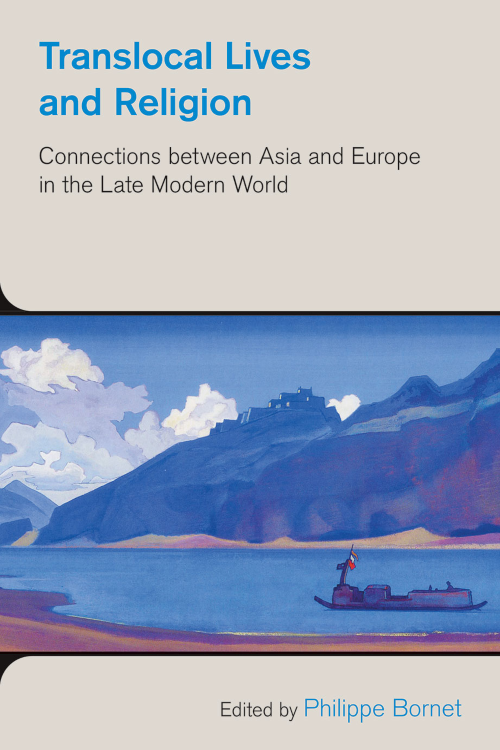Translocal Lives and Religion by Philippe Bornet (ed)
This volume profiles ten ‘remarkable individuals' who interacted with religious discourses, doctrines or practices in the 19th and early 20th centuries
 Translocal Lives and Religion - Connections Between Asia and Europe in the Late Modern World
Translocal Lives and Religion - Connections Between Asia and Europe in the Late Modern World
By Philippe Bornet (ed)
Equinox, Sheffield
ISBN: 9781781795828
Reviewed by Alec Gilmore
The title invites clarification. Religion? Think people, not faiths. Translocal? Think small time human, not large institutions. Asia and Europe? Think explorers, not territory. Connections? Spot the extra-ordinary in the very-ordinary.
19th and 20th century colonialism created what one writer has called ‘global empires of religion’ but ‘the big story’ was never the only story. For Bornet the key is the microscope, penetrating the cracks, scraping out what once was brushed aside as dust but today may have significant traction, profiling ten ‘remarkable individuals and a variety of ‘connected histories’ of ‘cross-cultural, translocal encounters’.
Pandita Mary Ramabai Sarswathi (1858-1922) was a one-woman radical whose early life was ‘nomadic’, travelling across India with no roots, no fixed abode and no sense of belonging, followed by similar nomadism across England and the USA. Frequent encounters en route forced frequent changes in her way of life, breaking barriers and traditions, giving up and starting afresh, which subsequently found expression in the institutional transformations she sought to bring in society. She embraced Christianity in England and finding the US equivalent less satisfactory finished up committed to an egalitarian and humane world for those she considered to be most oppressed. On returning to India she established institutions and homes which broke denominational and caste barriers to provide a liveable community for those on the margins of society.
Dugeld Semple (1884-1964), long before the planet, ecology and climate change became fashionable, was an anti-clerical nonconformist, who under the combined influence of Tolstoy, Gandhi and a touch of Transcendentalism, became a Scottish exponent of the 20th century ‘Simple Life’ and an alternative Christian culture. Recognised today as the foreruner of organic, ecological culture.
Charles James William Pfoundes (1840-1907) was an Irishman with interests in Spiritualism and other Reform movements who responded to the arrival of Buddhist missionaries in London (under the aegis of the Kyoto Overseas Propagation Society) by forming the first Buddhist Mission to London and subsequently becoming one of their missionaries in Japan where he died. An early example of two-way missionary traffic.
Margaret Noble (1867-1911) comes across as ‘the ideal Transnational Disciple’ operating in a ‘translocal space’, mainly in India. Two other papers cover 'Religiosity' in European Colonial Calcutta’ and ‘The Transnational Formative Years of China's Indology’ in ‘Re-discovering Buddha's Land’, and Bornet portrays ‘The Multiple Lives of Sadhu Sundar Singh (1889-1929) as ‘a Christian Hindu Apostle’.
Each paper has its own specific contribution. Collectively they reflect a wholly different way of life. In an Afterword Maya Burger focuses on what can happen when we get out of our comfort zone, learn from one another and grasp the importance of ‘connectedness’ so as to say, ‘Behold a new thing!'
She then puts flesh on this in the world of music. In the 1960s when Yehudi Menuhin and Ravi Shankar tried to play Classical Western and Classical Indian music together, the result could only be described as 'timid'. Artists today have acquired a fluency to express themselves in both forms and to 'behold a new thing’. One wonders what other ‘new things' might be hovering in the wings of the religious world awaiting discovery?
Alec Gilmore is a Baptist minister
Baptist Times, 27/08/2021